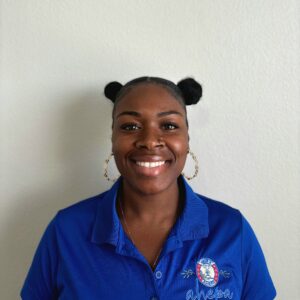The power of publicity
The value of positive media coverage is—to paraphrase the credit card commercial— “priceless,” and is often overlooked by senior communities. The printed word has a 70% greater retention rate than traditional advertising. Third party endorsements are more credible, and the value of what someone reads is long-lasting. Gaining positive press attention isn’t by happenstance. By utilizing some basic techniques, your community may reap rewards.
Determining relevance
There is hard and soft news. Hard news stories are immediate, relevant, and could range from events to conflicts. Generally, these are covered by reporters who want to write their own story. Soft news entertains and informs but is less immediate.
| The cardinal sin in trying to gain press attention is to not read the local newspaper. |
Both hard and soft news need the five W’s: who, what, when, where, why, as well as how. An example of a hard news story would be an announcement of the community’s new expansion and would include the specifications and details of the expansion such as cost, scope, architect, and number of units.
Soft news could be a feature on the community’s chef and cooking techniques he applies to appeal to residents. Because reporters may want stories that would be applicable to those not necessarily living in a senior community, tailoring the article to include cooking tips for adult children who prepare meals for elderly parents may be more relevant.
Piquing a writer’s interest
The cardinal sin in trying to gain press attention is to not read the local newspaper. You may not have a nose for news, but by reading the paper and watching the news, you will learn which writers cover specific subjects. These are the people to approach with your story. Asking yourself the simple question, “Would I be interested in reading about this tomorrow?” will help in determining both the angle and interest. In determining potential opportunities for press coverage, consider events that would provide heartfelt photos such as intergenerational activities engaging seniors with children versus auditorium seating of seniors listening to a lecture.
Remember to look beyond the reporter who covers senior-related stories. Workplace issues, business and personnel announcements, community awards, and family concerns are other opportunities to garner publicity for your community.
Tips of the trade When seeking publicity, remember these tips:
|
Vital to publicity
The activity director of a community may hold a key in successful publicity opportunities; however, it may be a challenge to differentiate between creative story angles and those activities that strictly appeal to residents. Here again, the questions to ask should be, “Is this activity different than those at other senior communities?”; “Are the instructors of interest and unique to the community?”; “Is the activity unexpected?”; and “Are there community opportunities for the general public to attend?”
Among examples, an assisted living community decided to have a fashion show. The creative activity director helped residents create their own fashions. T-shirts and hats were decorated and residents took the runway to strut their stuff to live music and an applauding audience. The event offered great post-event media coverage. The fashion show was a departure from typical activities and showed seniors positively engaged. Also, intergenerational events involving local school children are usually safe bets. A reporter will not be interested in just their appearance; the children need to interact with the seniors. Opportunities for the residents and community to help others may offer publicity angles. Fundraisers with check presentations, hosting charities at the community, and other acts of kindness for others will put the community in the news. It’s a win-win. Employees and residents enjoy doing for others, too.
The ‘spin’ factor
Traditional holidays may be stiff competition for news coverage unless your community has a new twist. Holding a holiday celebration a few days before the actual holiday offers writers a chance to develop their holiday stories early. A pre-Halloween parade or New Year’s celebration at noon may have a chance at publication. Chase’s Calendar of Events offers a myriad of event ideas that may be less typical than the norm and provides some creative event ideas to glean potential media coverage. The guide lists an event for everything and every day—and if you’re really creative, you can create your own event.
Relevance to current events and happenings may be opportunities for positive press. Inviting a political reporter to the community to hear seniors’ opinions before and after the national elections may be worthwhile. Television competitions like “Dancing with the Stars” and “American Idol” can be given a local spin if the community hosts its own version of the show.
There may also be residents who can be celebrated during events and holidays. One community highlighted a resident who carried the Olympic torch many years ago, while another community received television coverage on Martin Luther King Jr. Day by profiling a resident who had marched with King.
Knowing residents
Reporters could be interested in seniors who are still engaged and making contributions to their community. From volunteers who knit for children in the hospital to those who mentor at the local school, these seniors set examples for successful aging.
Staff meetings may bridge the gap in learning about residents. It takes time to delve beyond the obvious, but a resident with an interesting military career, award-winning authors, founders of prestigious or innovative companies, and avid collectors may be living at the community. Although the staff may discover press-worthy information about a resident and is eager to contact a reporter, it is critical to first find out if the resident is willing to be interviewed.
Employees are newsworthy, too
There may be employees who offer publicity angles. Perhaps there is a human interest story of someone who has overcome adversity and worked their way up the company ladder or someone who pursues an after work hobby that has turned into a viable business. We have found a rock ‘n roll band member in a community’s marketing department, a receptionist who arranges flowers on the weekends for weddings, and chefs who choose senior community dining to allow for more family time. The community’s human resources department is a good place to begin the search for employees with atypical stories and backgrounds.
Reaching the media
At most newspapers, writers prefer e-mails to telephone calls or meetings. If a phone call is easier, always preface the call with the question, “Is this a good time?” When e-mailing a reporter, either submit an article or provide a detailed proposal called a pitch. Regardless of your approach, remember to reference the five W’s in providing the information.
| Media alerts and photo opportunities are also vehicles to alert the media that there is a newsworthy event they may want to consider. |
Another approach is to offer supportive resources (additional people to interview). A story on a new exercise class called Tap & Cane gained excellent coverage when resources included the drama teacher, students, and a physician supporting the value of tap dancing.
Media alerts and photo opportunities are also vehicles to alert the media that there is a newsworthy event they may want to consider. Be sure to include date, time, place, and event details. A senior living community recently received tremendous front page coverage by submitting a media advisory to the local paper about a butterfly garden being planted at the community by a Girl Scout troop.
Public relations companies
There are specialists in public relations who can be especially useful in generating press attention. So often what seems easy—calling and alerting a reporter—may keep getting pushed to another day. Before long, the opportunity has passed and now the event is no longer newsworthy. There is a range in services and charges public relations companies offer. Take care they understand the senior housing industry and will invest time in meeting with staff and brainstorming story ideas.
Value of reprints
The value of a reprint is long-lasting. Senior living communities often fail to capitalize on positive publicity. From an insertion in the community’s brochure to the Web site’s pressroom, articles endure. Reprints of articles can be mailed to community’s referral sources and families with a note, “Thought you’d enjoy reading about us.” Articles that may not have been used by the media still are useful as marketing tools and can cover industry trends and consumer assistance.
When someone says they read about your community all the time, you know you are the right track in achieving positive publicity for your community.
Janis Ehlers, MBA, CAASH, a 30-year marketing and public relations veteran, heads The Ehlers Group, an award-winning strategic marketing company specializing in real estate development and active adult communities throughout the country. She is the author of Marketing Seniors Housing, a book published by the National Association of Home Builders. She can be reached at (954) 726-9228 or janis@theehlersgroup.com.
I Advance Senior Care is the industry-leading source for practical, in-depth, business-building, and resident care information for owners, executives, administrators, and directors of nursing at assisted living communities, skilled nursing facilities, post-acute facilities, and continuing care retirement communities. The I Advance Senior Care editorial team and industry experts provide market analysis, strategic direction, policy commentary, clinical best-practices, business management, and technology breakthroughs.
I Advance Senior Care is part of the Institute for the Advancement of Senior Care and published by Plain-English Health Care.
Related Articles
Topics: Articles , Facility management












